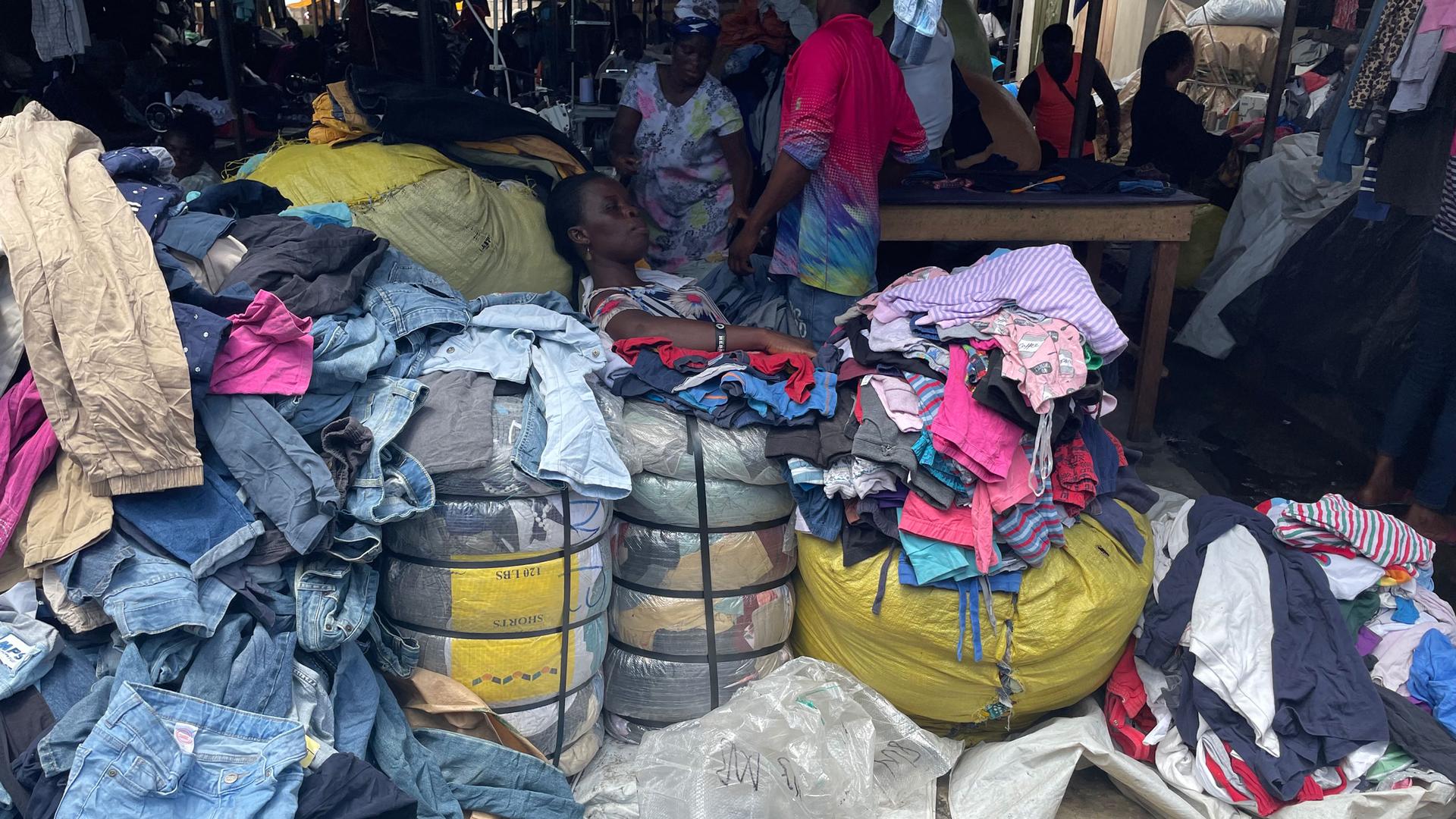How the West’s obsession with fast fashion compounds an environmental nightmare in Ghana
Inside the bustling Kantamanto market in Accra, Ghana, shoppers head to the largest, secondhand clothing market in Africa, teeming with thousands of people hawking their goods.
Traders conduct their business in densely packed wooden stalls bursting at their seams with large bales of used clothing — from underwear to shirts and jeans — with some items hailing from big fashion brands and designers in the United States and the United Kingdom.
Related: Iconic ‘Ghana Must Go’ bag gets refashioned as a meditation on migration
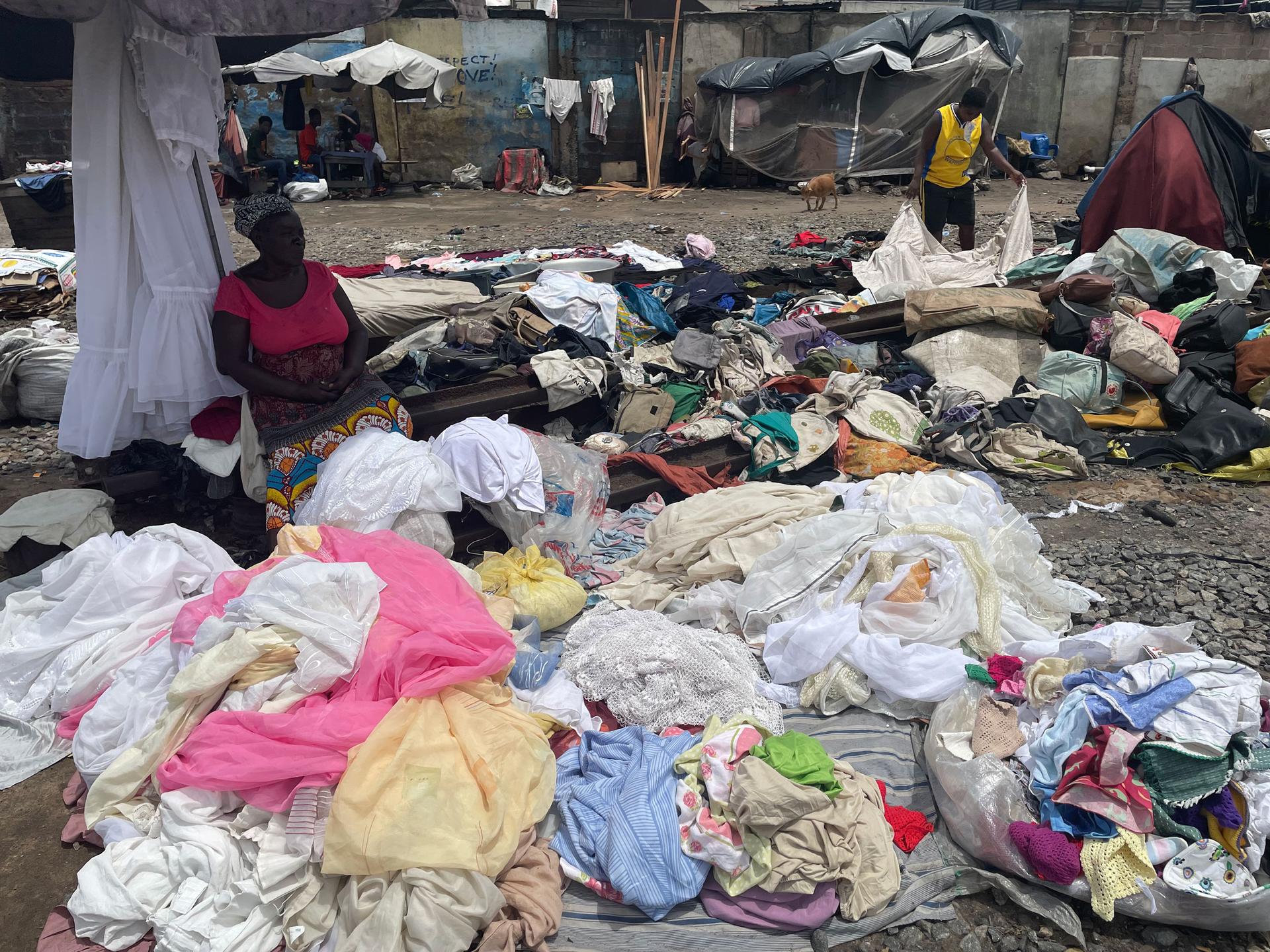
The secondhand clothes industry has been thriving in many African countries including Ghana for many years. But with the boom of fast fashion — the mass manufacturing of cheap clothes — a lot of it ends up barely worn, donated or in a landfill.
Related: Why ‘fast fashion’ might need to slow down
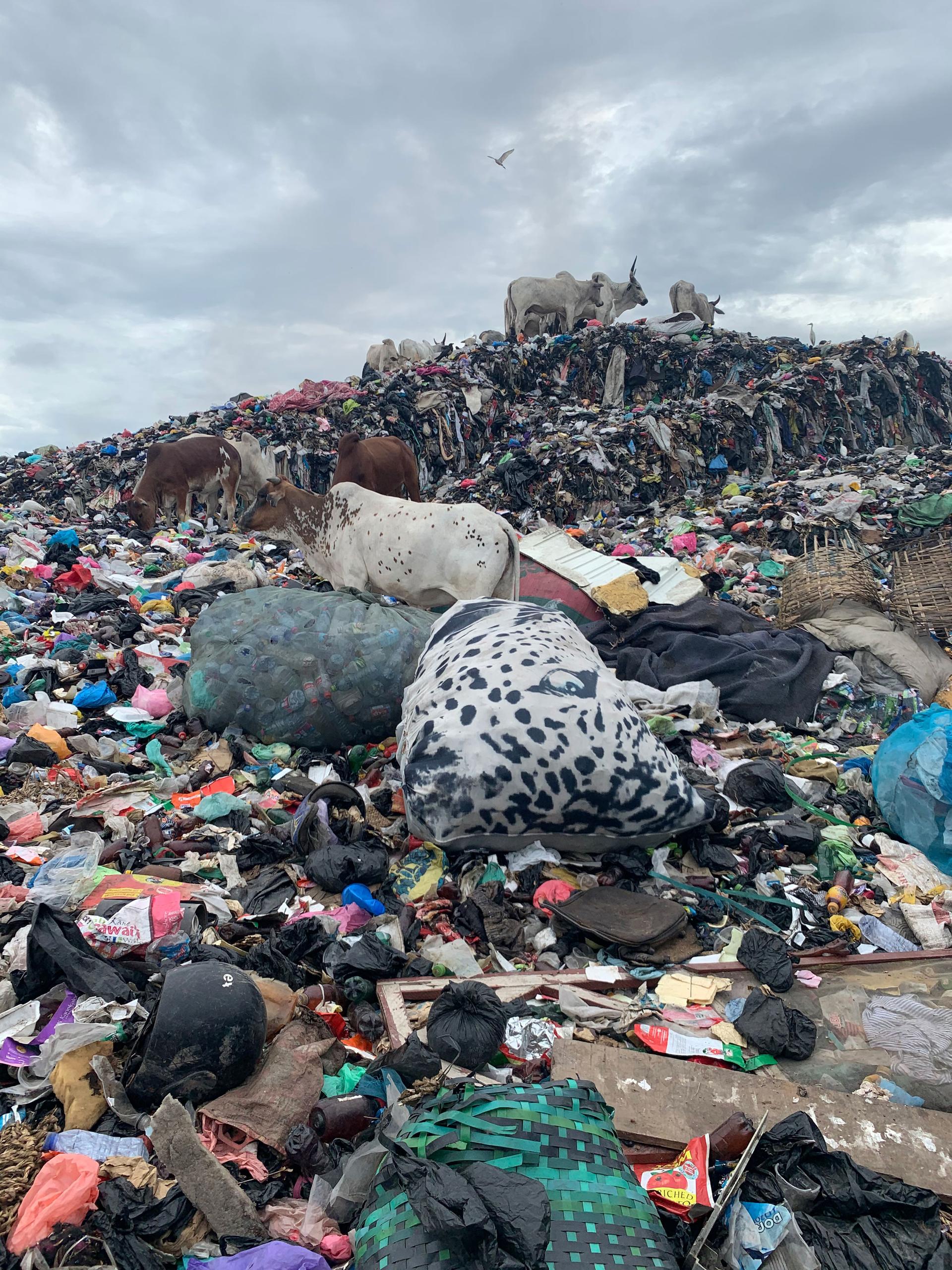
The deluge of worn-out clothes arriving in Ghana has overwhelmed the West African country’s infrastructure — posing huge environmental threats.
Some $500 million worth of clothing is wasted a year, according to the Ellen MacArthur Foundation in the UK. Every week, loads of used clothing primarily from the US and the UK ends up in Accra, where eager sellers hawk the donated goods from well-meaning American and British people.
Ghana, with over 30 million people, expects to receive, distribute and dispose of these billions of items of clothing per year through various aid agreements.
Traders often call these clothes obroni wa wu, meaning “dead white man’s clothes,” in the local Twi language.
Edith Affrem, who’s sold secondhand clothes for 17 years, said the business is very profitable. She said she uses proceeds from her sales to pay her bills and take care of her children. Traders like Affrem pay $20 to $400 per bale to middlemen, and they never know if they’ll get bales full of trash or treasure.
Some traders even say a prayer before cutting their bales open.
The competition is fierce and traders often shout or call out to passersby to attract buyers. Their antics include singing and dancing to woo customers.
Related: Turkey’s modest fashion market hits its stride
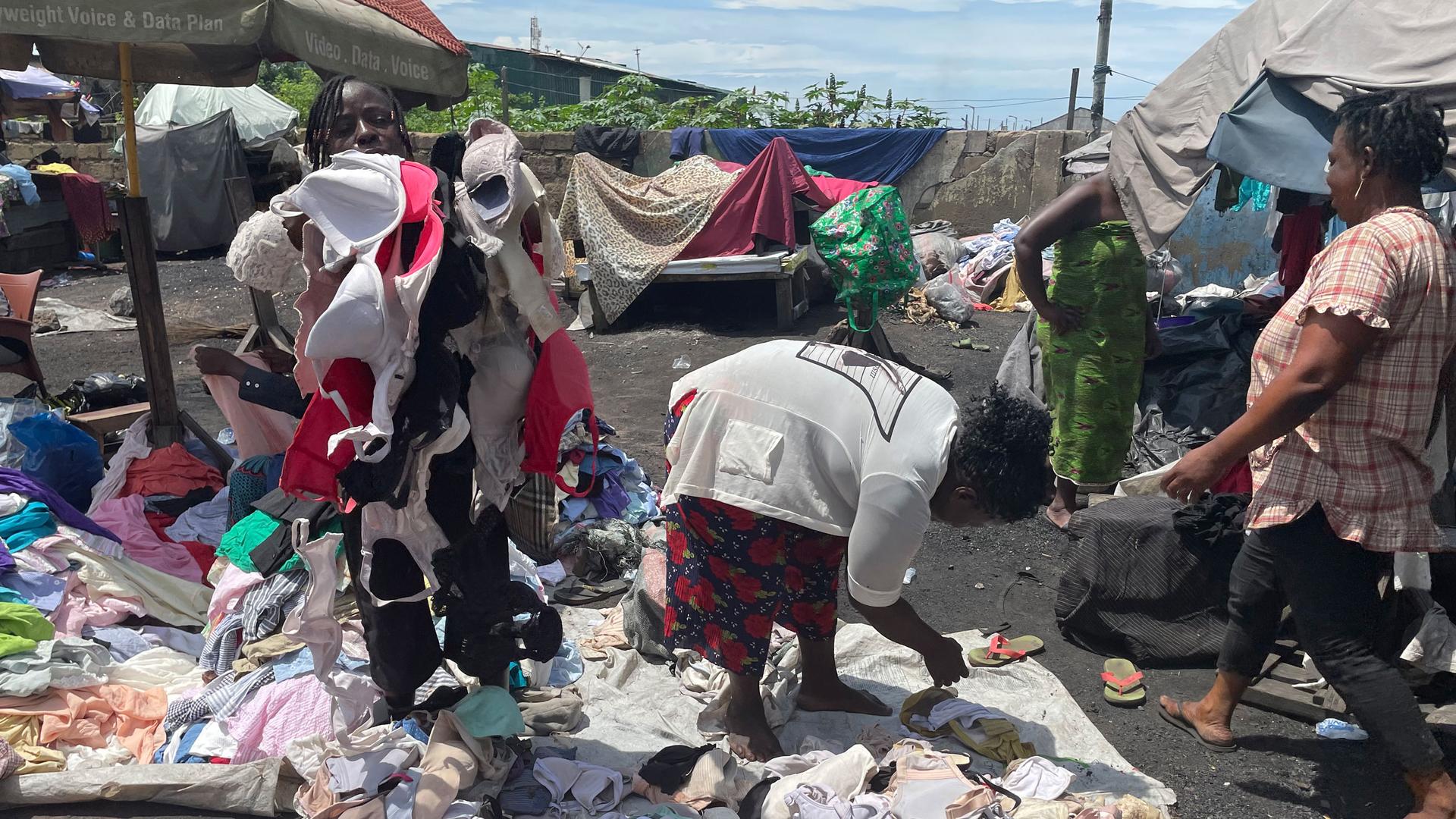
In some corners of the Kantamanto market, tailors busily repair or alter secondhand clothes to make them more marketable.
Daniel Frimpong does his part in the value-addition chain of the secondhand clothes business. He spends his days washing tons of used jeans and dips them in buckets of blue-dye solutions to brighten the color of the faded clothes.
“When we do [dye the jeans] like this they give us a good price for the jeans. The job is helping us, the unemployed youth.”
“When we do it like this they give us a good price for the jeans. The job is helping us, the unemployed youth,” Frimpong said.
Related: Forever 21’s bankruptcy filing shows limits to fast fashion
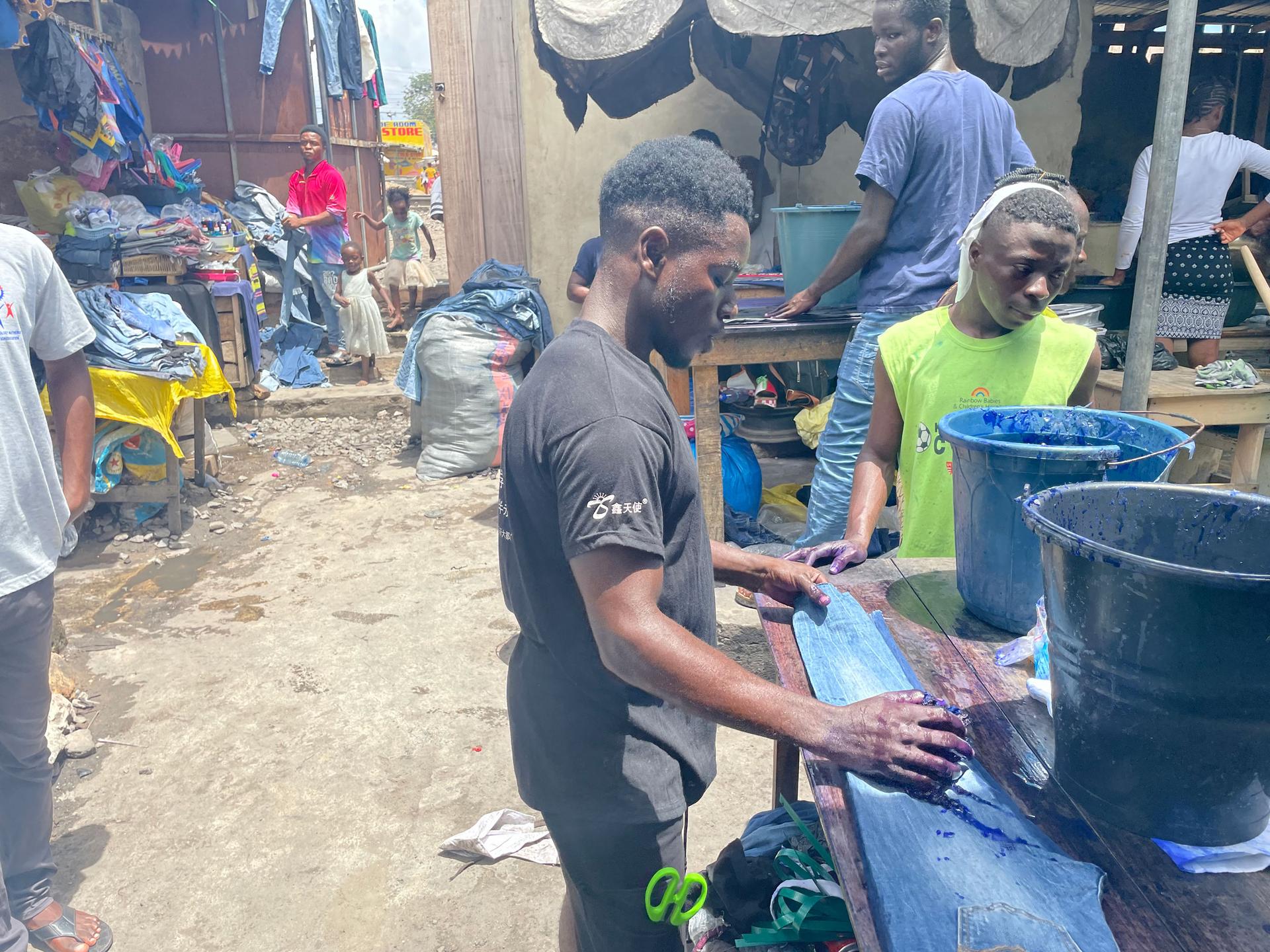
Moving large bales through the market’s narrow alleys is a tedious task performed often by hundreds of female porters locally known as kayayei, who carry loads twice their body weight, but make less than $5 per day.
The secondhand clothing market provides critical income for those in the trade, but its impact on the environment is a growing problem in Ghana. Most of the used clothes cannot be sold or worn because they are beyond repair and they end up in landfills.
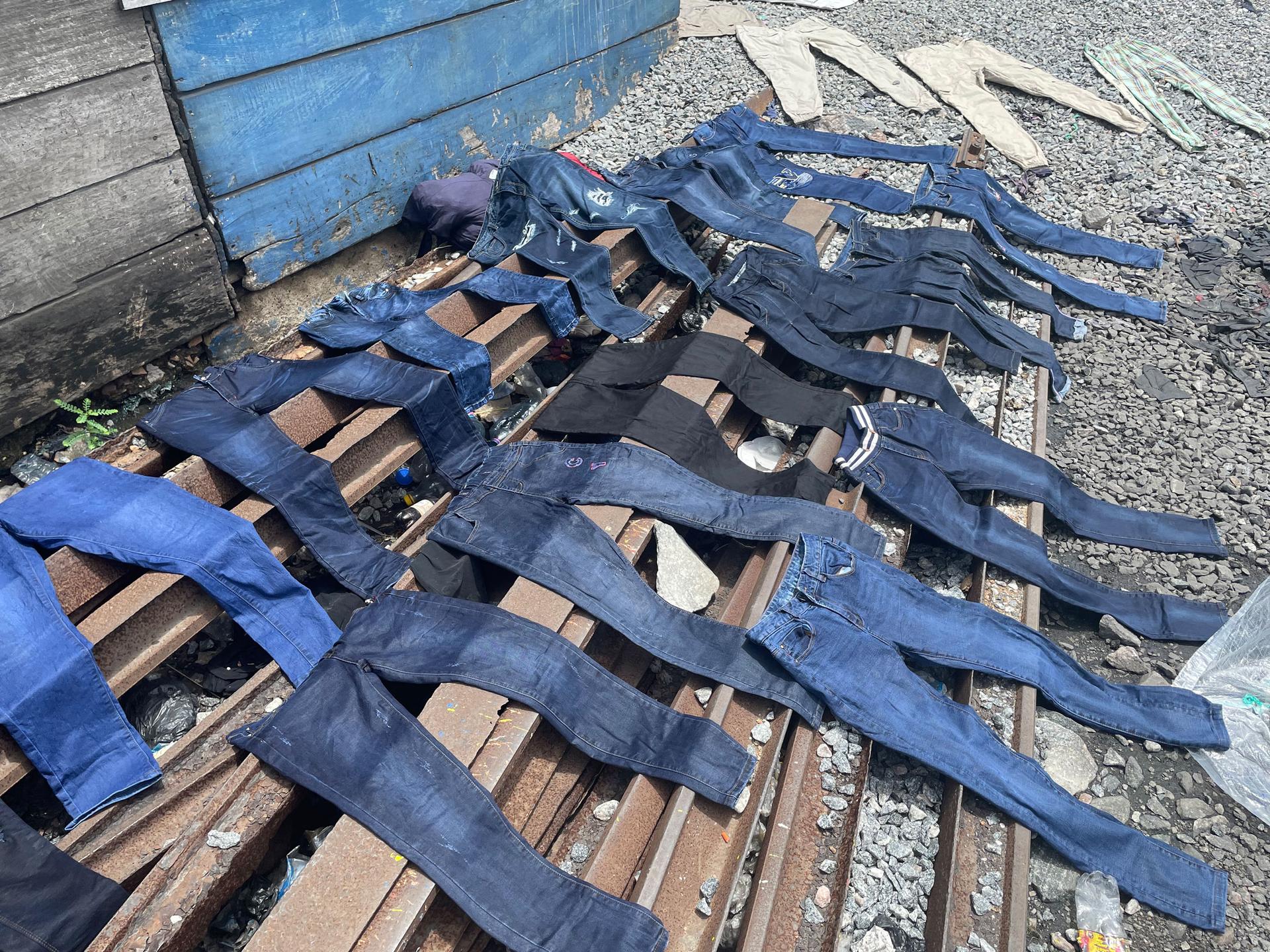
Every week, over 15 million pieces of used clothing arrive in Ghana, and then 40% of those clothes leave Kantamanto as waste.
“This isn’t just an environmental crisis, it’s a financial crisis for everyone who works in Kantamanto. Because the clothing is so much, and so low quality, people simply cannot get their money back out and basically are operating in a debt cycle.”
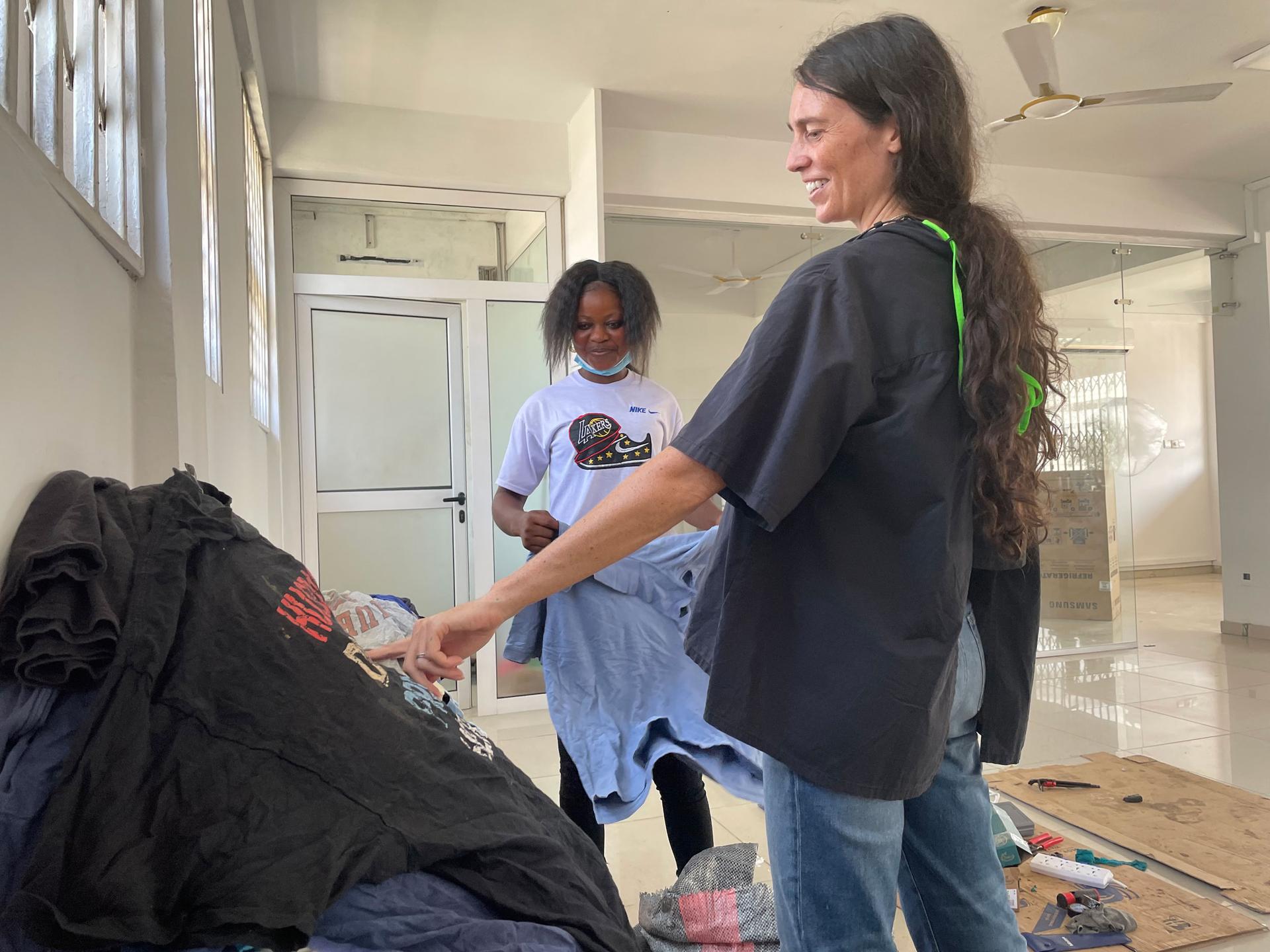
“This isn’t just an environmental crisis, it’s a financial crisis for everyone who works in Kantamanto. Because the clothing is so much, and so low quality, people simply cannot get their money back out and basically are operating in a debt cycle,” said Liz Rickett, an American sustainable fashion campaigner in Ghana.
On top of that, clothing waste clogs major open drains during Accra’s periodic torrential flooding. Public health experts have said that this may increase the risk of diseases like malaria and cholera.
“Exporters are hiding under the guise of donations to charity and they are virtually packing textile waste among whatever shipments they are bringing, and that’s very dangerous.”
“Exporters are hiding under the guise of donations to charity and they are virtually packing textile waste among whatever shipments they are bringing, and that’s very dangerous,” said Solomon Noi, head of waste management within the Accra metropolis area.

Noi also said that clothing in landfills creates huge amounts of methane gas and can cause devastating fires. This has led to the shutdown of Ghana’s biggest landfill, compounding the country’s waste management problems.
Now, most of Ghana’s fast-fashion waste ends up at the country’s beaches. Waste management experts are concerned about the effect of this pollution on aquatic life.
“A huge chunk of textile waste is stockpiling at the ocean bed. Some time ago, we had deaths of some species of fish along the coastline. I can tell you some percentage of our ocean aquatic life will go,” Noi said.
Every year, the fashion industry uses 93 billion cubic meters of water and is responsible for 10% of annual global carbon emissions, more than all international flights and maritime shipping combined, according to the United Nations Environment Program.
At this pace, the United Nations warns that the fashion industry’s greenhouse gas emissions will surge more than 50% by 2030 if not brought under control.
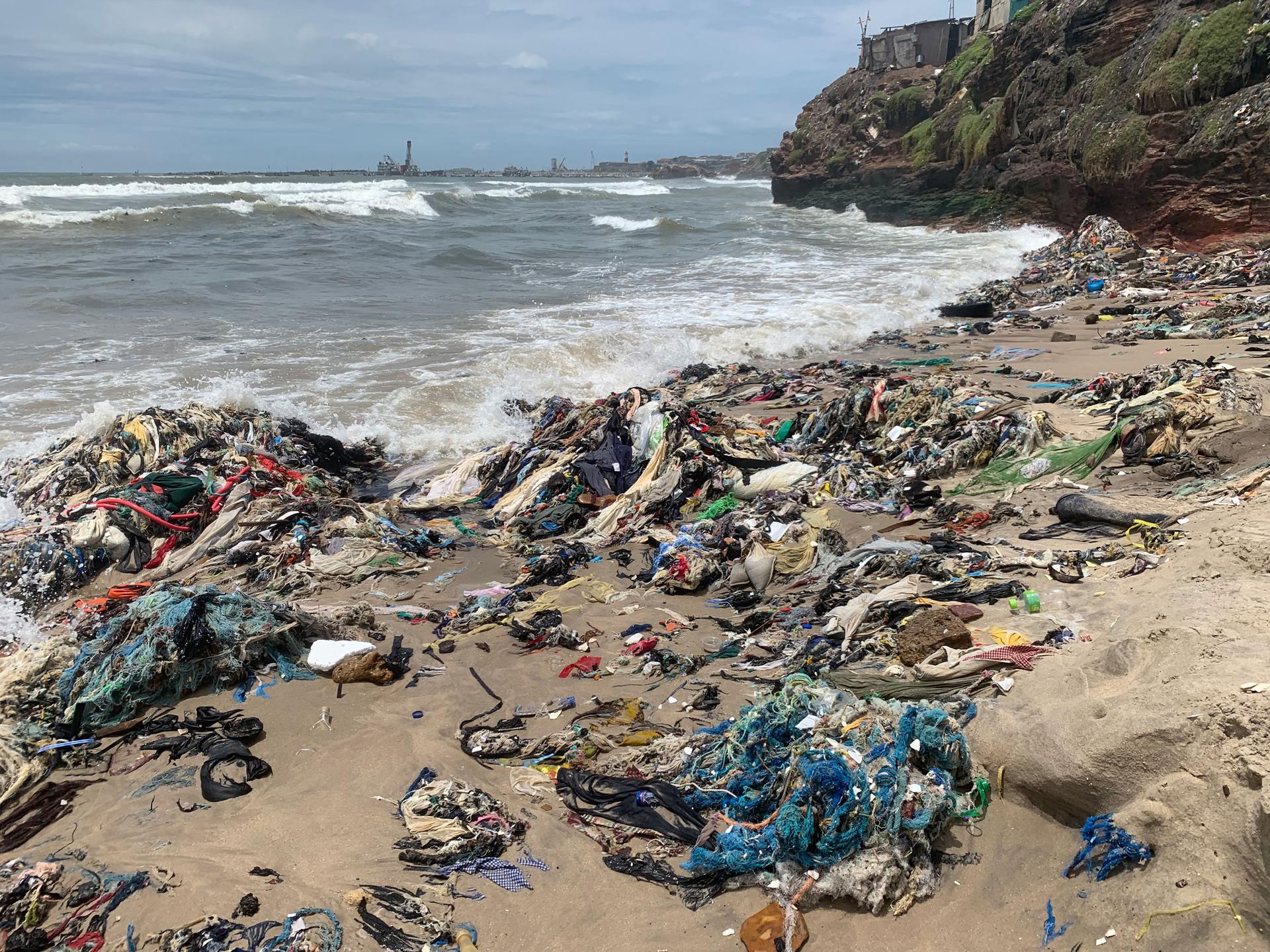
Liz Ricketts, who co-founded the OR Foundation, a nonprofit working at the intersection of environmental justice, education and fashion development, said clothing manufacturers from the West need to take responsibility.
“We have to go to the root of this issue which is a legacy of colonialism. And we need to address the fact that this has been happening for decades. Countries in the ‘Global North’ need to pay ecological reparations to clean up the mess that has been made so that Ghana can catalyze its own circular economy and have a more sustainable infrastructure.”
Noi has another solution:
“If you ask me from where I sit, a ban on secondhand clothing is the way forward.”
But for thousands of traders at Kantamanto, any such move must come with an alternative source of livelihood. Especially in a country where soaring unemployment could be debilitating.
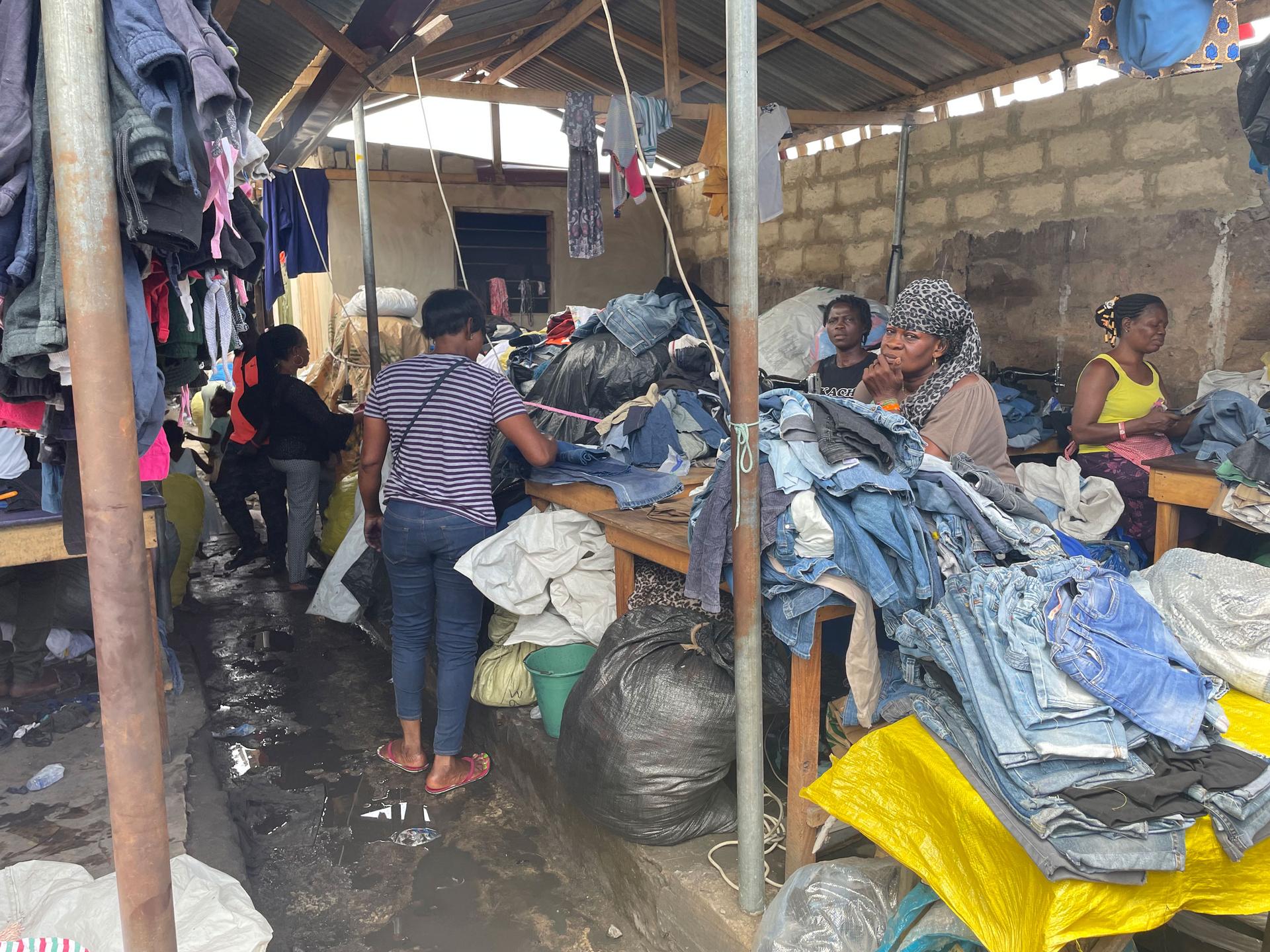
Meanwhile, the market continues to attract people from diverse social and financial backgrounds. Like many of the country’s youth, shopper Nana Akua arrived at Kantamanto to buy clothes for a good bargain.
She’s on the lookout for those big fashion brands.
“I like buying my stuff at Kantamanto because you can basically get everything there,” she said.
